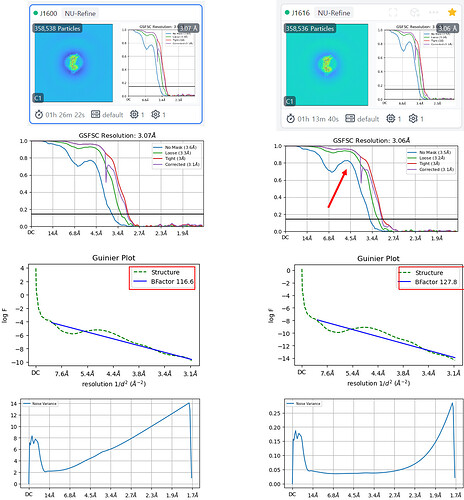Hi @Jadyn! Thanks for the question!
In general, we would expect both the noise model and Guinier plot / B-factor to change.
To understand the effect on the noise model, consider the difference in dose weights before and after RBMC:
In this plot, I’ve stacked the relative weight of each frame on top of each other, for each frequency. Thus, the gap between two lines indicates the weight of the top line.
On the left, we see that with standard dose weights (like those applied during patch motion correction), all the frames are weighted equally. However, the contribution of the late frames rapidly falls off as frequency increases.
The empirical dose weights calculated by RBMC (right) show a very different pattern, in which later frames have a higher weight at middle frequencies (the recovery of late frame weighting at high frequencies is the issue reported here – we don’t understand why this happens yet).
Now, considering the effects this difference has on the noise model. As we increase the contribution of each frame, we expect the standard deviation of the final particle images to be reduced, since the noise of a greater number of frames is being averaged together to produce the final image. As the weights decrease at high frequencies, you see the sharp increase you’ve noted, since the weights are returning to a shape similar to that of the standard dose weights.
Of course, the lower noise modeled in intermediate frequencies is not an unalloyed good — it may be that you’re simply averaging together more noise without adding more useful signal. This depends on the overall quality of the RBMC results.
As for the B-factor, we also would expect this to change, but we’re surprised to see a greater B-factor after RBMC. Could you share with us your dose weight and FCC plots? They appear just before the particle trajectories in the Event Log.



